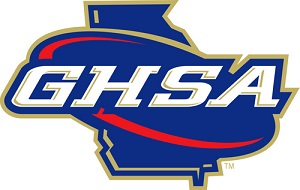Sudden Cardiac Arrest In Athletes

Sudden Cardiac Arrest in Athletes
Liz Morris, ATC
Hughston Athletic Training Fellowship
What is sudden cardiac death?
Sudden cardiac death is a condition that results from an abrupt loss of heart function (cardiac arrest). It can occur in anyone, especially athletes with preexisting heart conditions. The athlete may or may not have diagnosed heart disease. The time and mode of death are unexpected, usually occurring minutes after symptoms appear. The most common underlying reason for adults to die suddenly from cardiac arrest is coronary heart disease (fatty buildups in the arteries that supply blood to the heart muscle).
What causes sudden cardiac death?
An estimated 1 in 200,000 young athletes develops abrupt-onset ventricular tachycardia (rapid heartbeat) or fibrillation (a chaotically abnormal heart rhythm) and dies suddenly during exercise. Males are affected 9 times more often than females. Basketball and football players in the US and soccer players in Europe may be at the highest risk. All known heart diseases can lead to cardiac arrest and sudden cardiac death. Adrenaline released during intense physical or athletic activity often acts as a trigger for sudden death when these conditions are present.
Sudden cardiac death in young athletes has many causes but the most common is undetected hypertrophic cardiomyopathy (a condition where the heart muscle thickens). Athletes with thin, compliant chest walls are at risk of commotio cordis (sudden cardiac arrest from a blunt, non penetrating blow to the chest) even when no cardiovascular disorder is present. The blow may involve a moderate-force projectile from sports with baseballs, softballs, lacrosse balls, hockey pucks, or a direct blow in boxing. Direct impact with another player triggered by chest wall impact immediately over the anatomic position of the heart may also cause this disorder. In 90 percent of adult victims of sudden cardiac death, two or more major coronary arteries are narrowed by fatty buildups. Scarring from a prior heart attack is found in two-thirds of these victims.
Management of Sudden Cardiac Arrest
- Management begins with appropriate emergency procedures including: CPR and AED training for all likely first responders, and access to an AED.
- Essential components sudden cardiac arrest management include early activation of EMS, early CPR, early defibrillation and rapid transition to advanced cardiac life support.
- High suspicion of sudden cardiac arrest should be maintained for any collapsed and unresponsive athlete.
- Young athletes who collapse shortly after being struck in the chest by a firm projectile or by contact with another player should be suspected of commotio cordis.
- Any collapsed and unresponsive athlete should be managed as a sudden cardiac arrest with application of an AED as soon as possible.
- CPR should be provided while waiting for an AED.
- Interruptions in chest compressions should be minimized and CPR stopped only when an AED is in use.
- Rapid access to the victim should be facilitated for EMS personnel.
What are treatments for survivors?
If a cardiac arrest was due to ventricular tachycardia or ventricular fibrillation, survivors are at risk for another arrest, especially if they have underlying heart disease. Survivors of cardiac arrest must have all causes corrected to prevent future episodes.
Possible tests and treatments include:
- cardiac catheterization
- electrophysiologic tests
- coronary artery bypass surgery
- balloon angioplasty or PCI (PTCA)
- antiarrhythmic medicine
- implantable cardioverter / defibrillator
- implantable pacemaker
- heart transplant
Can the cardiac arrest that causes sudden death be reversed?
Brain death and permanent death occur in just four to six minutes after someone experiences cardiac arrest. Cardiac arrest is reversible in most victims if it's treated within a few minutes with an electric shock to the heart to restore a normal heartbeat, a process called defibrillation. A victim's chances of survival are reduced by 7 to 10 percent with every minute that passes without CPR and defibrillation. CPR can double or triple a cardiac arrest victim's chances of survival. Few attempts at resuscitation succeed after 10 minutes.
Prevention
Before participation in sports, athletes should be commonly screened to identify any risks. Screening recommendations for all children, adolescents, and college-age young adults include a medical and family history and physical examination. Family history or symptoms or signs of hypertrophic cardiomyopathy require further evaluation. Confirmation of certain disorders may exclude students from sports participation, reducing the risk of sudden cardiac arrest.
References:
American Heart Association (2008). Sudden Cardiac Death. Retrieved July 16, 2008, from http://www.americanheart.org/presenter.jhtml?identifier=4741
Medicine Net. (2002).Definition of Commotio cordis. Retrieved July 18, 2008, from http://www.medterms.com/script/main/art.asp?articlekey=20589
MERCK & CO., INC. (2008). Sudden Cardiac Death in Athletes. July 16, 2008, from http://www.merck.com/mmpe/sec07/ch082/ch082b.html
Satlof, E., Waxenberg, R. (2006). Sudden Cardiac Arrest In Athletes. Retrieved July 16, 2008 from http://www.la12.org/pdf/MainSCAReleaseFinal.pdf?schools=VIRGINIA&sport=+-+MEN'S
Liz Morris, ATC is a second year graduate student and recipient of the Hughston Athletic Training Fellowship Program in Columbus, Georgia. She received her Bachelors of Science Degree in Athletic Training from Georgia College and State University in May of 2007, where she also minored in Dance. While at GC&SU Liz worked with men's and women's tennis, as well as softball, and completed a high school rotation with Tattnall Square Academy and First Presbyterian Day School both in Macon. She was a member of the Kinesiology club and received the Presidential Volunteer Service Award. She is an active member of the National Athletic Trainers Association (NATA) and the Georgia Athletic Trainers Association (GATA). Liz is responsible for the overall healthcare of the athletes at Glenwood School in Phenix City, Alabama.
Story Credit: https://www.ghsa.net/sudden-cardiac-arrest-athletes


